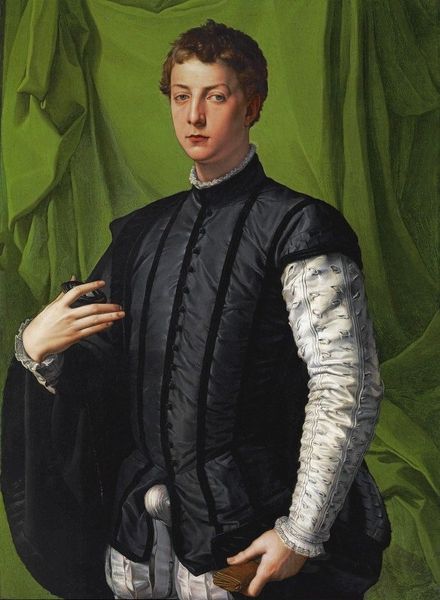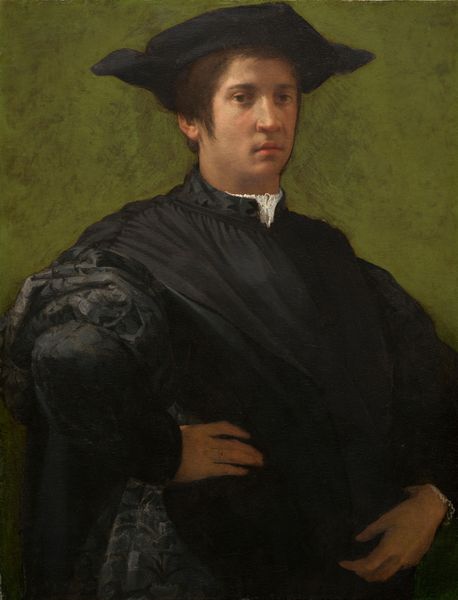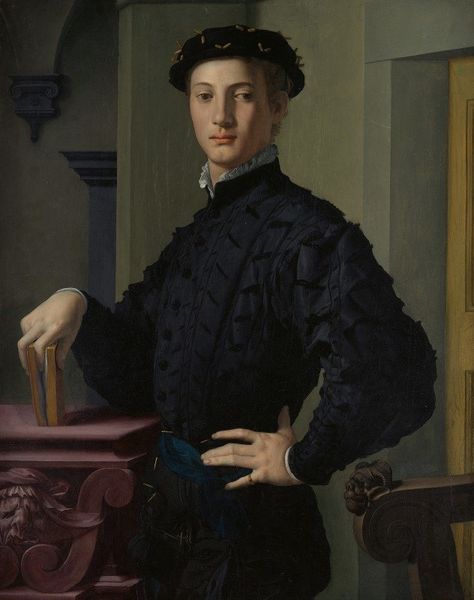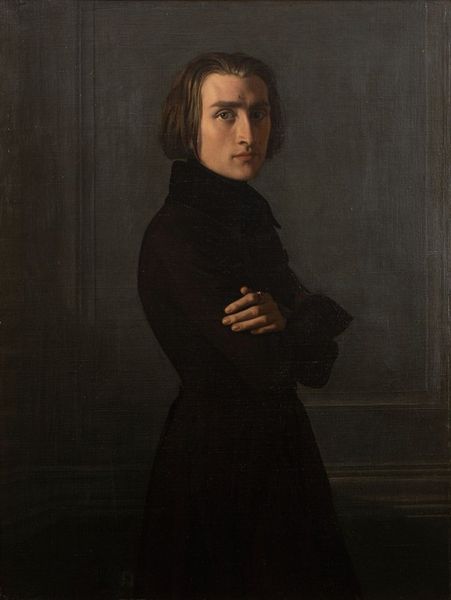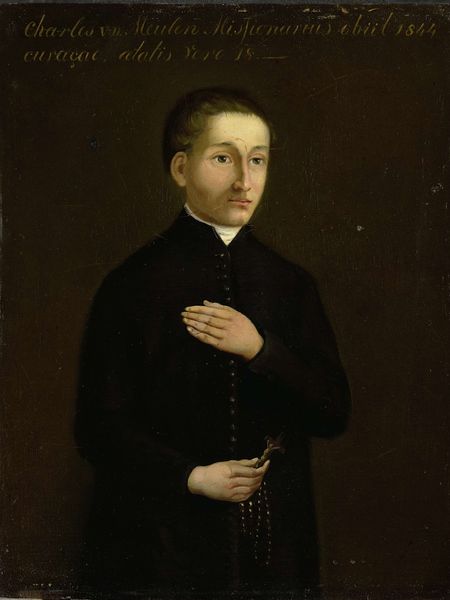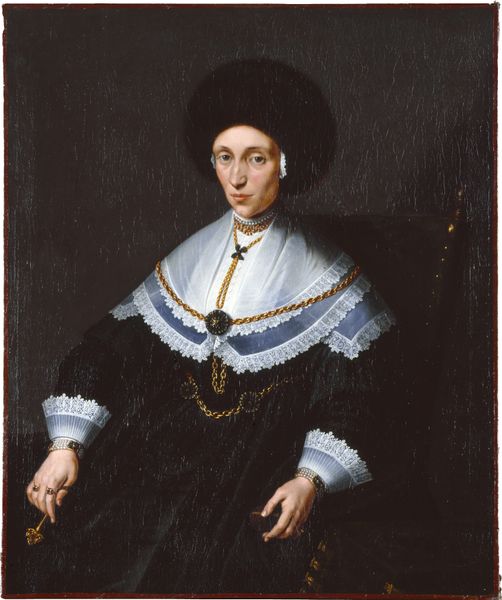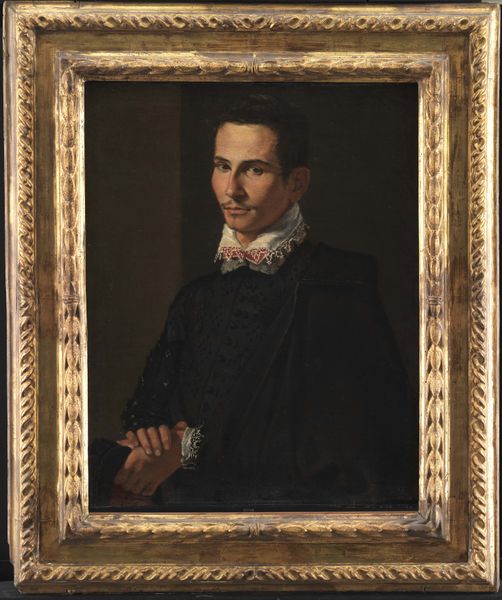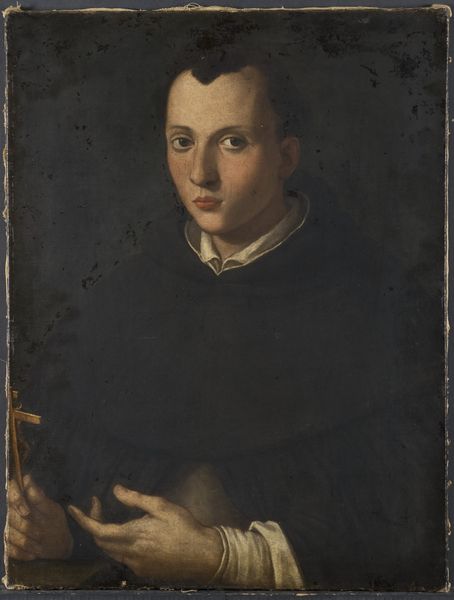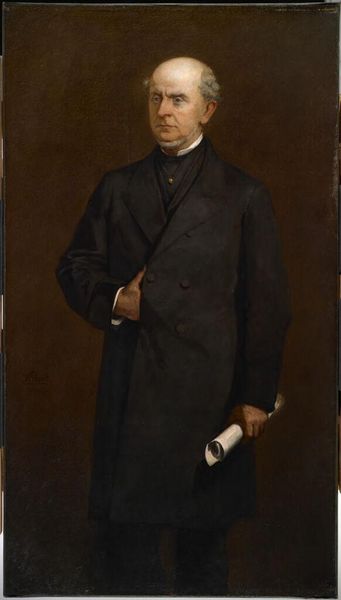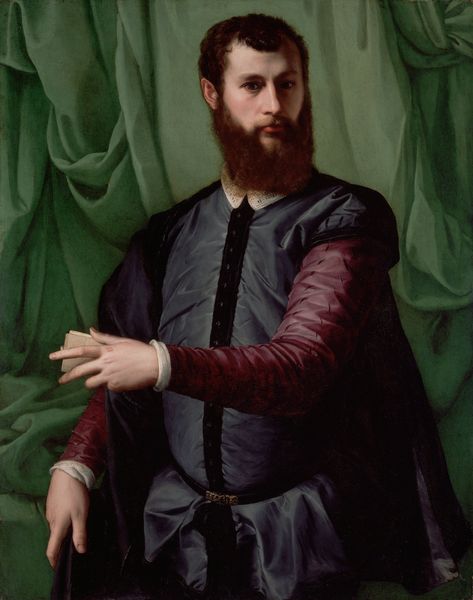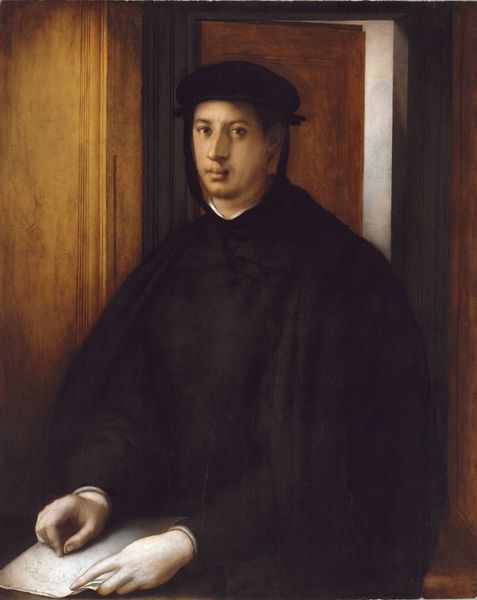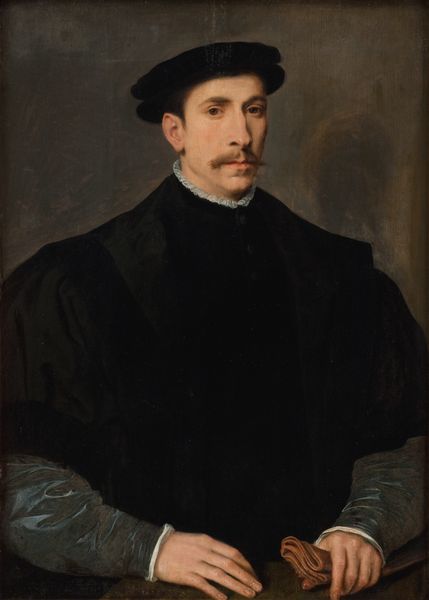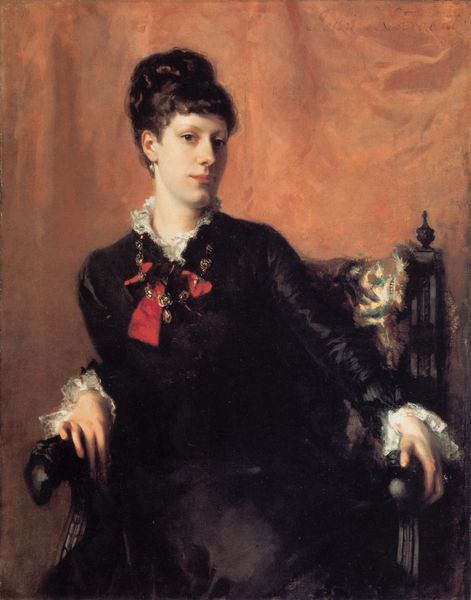
#
character portrait
#
portrait subject
#
portrait reference
#
portrait head and shoulder
#
portrait drawing
#
facial portrait
#
portrait art
#
fine art portrait
#
celebrity portrait
#
digital portrait
Dimensions: 140 x 133 cm
Copyright: Public domain
Editor: Here we have Alessandro Allori's "Portrait of a Young Man" from around 1560. It feels almost staged, you know? There are so many different elements competing for my attention. What do you see in this piece, with all its contrasting imagery? Curator: I see a carefully constructed allegory of Renaissance ideals. Notice the figure of Apollo with his lyre; what does that symbol evoke for you? It certainly suggests harmony and artistic refinement, core values prized during the Renaissance. Editor: So the sculpture embodies these values, and placing it in the portrait connects the young man to them? Curator: Precisely. And beyond the Apollonian, we have the suggestion of landscape out the window. But what of the male nude, crouched there? How does his inclusion shift our interpretation, complicate or enrich it? He seems to represent natural, earthly pleasures. Editor: Maybe a contrast between the idealized world of art and the realities of life? Or is he looking wistfully into that art-filled world? Curator: That tension, I think, is exactly the point. It's the space between restraint and indulgence, intellect and the body. Consider the sitter's attire as well. The somber tones communicate sophistication, but the rich textures and carefully placed jewels speak to a cultivated sense of self and the influence of fashion, the emerging role of individuals’ expressions. Editor: It is quite striking how much is going on for what appears at first glance to be a simple portrait. Curator: Portraits of this era aren’t straightforward depictions. They are complex symbolic statements and embodiments of the individuals in society. That is why it is key to identify all symbolic components in these Renaissance-era masterpieces. Editor: I see the painting quite differently now, noticing the complex layering of cultural meaning, not only to recognize Allori’s skill, but the influence of imagery that connects past to present. Thank you!
Comments
No comments
Be the first to comment and join the conversation on the ultimate creative platform.

